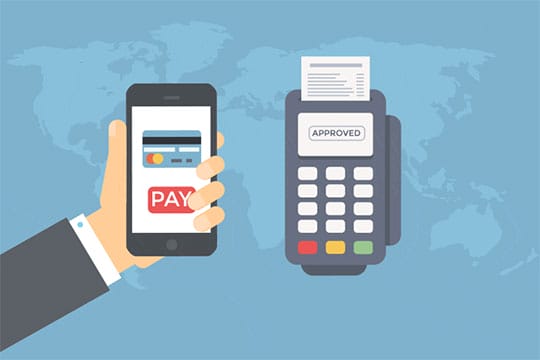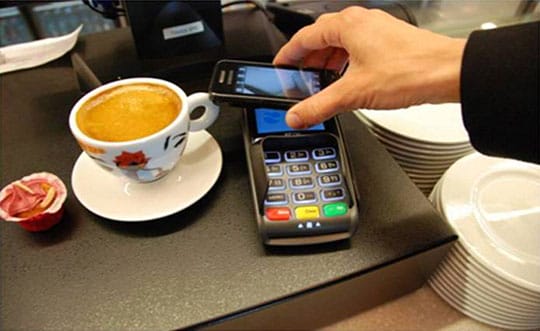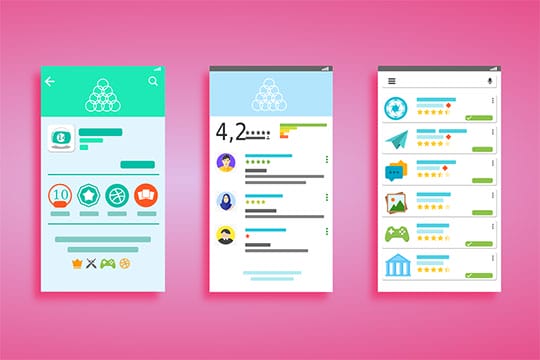Going cashless has never been easier because of the onset of digitization. Carrying cash around everywhere seems like a drag and not to mention the security concerns. This is where eWallet drops in, the e-payment methods are safe, completely secure and much faster than conventional transactions. With eWallets, one has complete peace of mind as they don’t have to carry or collect hefty sums of money.
During the past few years, numerous eWallet apps have surfaced and every app has something different to offer in terms of services. These eWallet apps have additional features other than to carry out digital transactions. They can facilitate you while making a special purchase while others can get you to book tickets or make reservations at specific hotels and inns at the convenience of your home.
With this, the question of the development and use of such eWallet mobile apps come into existence. Many development companies have adopted this as a source of profitable income and therefore, it can be interesting to understand Mobile App Development and the various particulars one can keep in mind in this endeavor.
So, with all the benefits of eWallets, the question of eWallet mobile app development comes into existence. Most development companies have embraced this as a viable source of cost-effective income. Hence, getting to know the various particulars of eWallet mobile app development can benefit you in your future endeavors.
Interested in this information? Wondering what are the methods of eWallet mobile app development and what different features come along with an eWallet app? Well worry not, we have all the information you’re looking, just scroll below and your every query will be answered.
Understanding eWallet app development

The entire concept of eWallet is important in itself. It is advisable to deliver an interface that has a huge demand. As mentioned previously, e-transactions can be tremendously convenient as people don’t have to waste their time and energy while being physically present somewhere just to utilize their sources. Although over the years there have been numerous companies that have dived into the process of developing an eWallet app. Therefore, a systematic procedure needs to be crafted that delivers and stands out among the rest.
When designing an eWallet app, one must keep in mind to keep the user interface easy to understand and relatively simple. For an effective outcome in the entire process of eWallet payment, the developers do need to understand that the general users of the app won’t be tech-savvy. Therefore, it should be understandable for them in the most basic form, because after all, they are trusting their money with the app.
Additional features are always a good option but too much of them can make the entire interface of the app a bit too complex for the average user. Therefore, a simple yet effective app should be designed so that a large number of consumers can benefit from it.
When developing an eWallet app, the developers’ number one priority should be to provide a secure environment for all the e-transactions to take place. Every day a new eWallet app comes to the surface that has been dictated to e-transactions and with the onset of eWallet apps, many fraudulent apps are also circulating the market. Therefore, there is absolutely no room for any sort of mishap or any third-party intervention/interaction, the entire process of the e-transaction must be extremely secure. People’s money is at stake here so the safety of the app must be developers’ primary concern.
Recommended for you: React Native vs Flutter vs PWA: Battle of Trending Mobile App Frameworks.
eWallet payment methods.

If you are a developer and have decided on developing an eWallet then it is vital to decide which mobile wallet you need. In addition to the payment method, the features that your mobile app is integrated with will also affect the overall mobile app development.
Before we dive deep into the features and the cost of this mobile app development, let’s explore the various ways and technologies that are used to make e-transactions via mobile phone.
- iBeacon and Bluetooth: This method identifies all your nearby friends for making payments. The iBeacon and Bluetooth technologies assist in making all the e-transactions fast and extremely secure. These technologies are still evolving and very much involved with today’s user community.
- NFC: Near Field Communication is probably one of the best technologies that are being used for transferring funds and sharing information with a convenient approach. These days, most of the eWallets are using the NFC technology for making all the payments in a contactless way.
- QR Codes: The third technology that is being widely used is QR Codes. You might use QR Codes for making transactions with the people who you frequently meet with or with the ones who are a part of your social community or office. This method’s only requirement is scanning the QR Code of the other person’s smartphone. Thus making the transaction process simple and quick.
- Payment App: If your eWallet app is being solely designed for business requirements then this is probably the best payment method. Your business can partner with local merchants and other businesses and can transfer sums of money swiftly. With a customized mobile app, transferring hefty amounts become safe and quick and it also makes sure that there are no third party involvements.
- Blockchain: Today, the most evolving trend for making online payments is through an eWallet that is powered by a blockchain. It is because of its immutability and high security. These type of mobile apps are primarily used by governmental and financial institutes because they are required to move large sums of money now and then.
Features of an eWallet mobile app development

- Authorizing Bank Account: Here the users can choose bank details of the bank through which they want to make transactions. If you need to do prompt payments, the bank information needs to be registered previously.
- User Registration: Simply sign-in with your social networking networks accounts or you can also use your credentials.
- Adding Balance: Here users can add a certain amount as the account balance per the transaction you have to make.
- Transferring Money: Here cash amount can be transferred to other users by entering the account’s information of that account.
- Checking Balance: The users can view their account balance to check their outgoing and incoming cash flows.
- Offer notification: the users will be able to see various offers as they make e-transactions, allowing them to redeem points.
- Bill payments: You can pay bills with registered bank accounts.
- Referrals: You can send invites to your friends and they can also receive and send funds. This makes it easier to make transactions without asking for the account details every time.
You may like: 9 Ways to Become a Better Mobile App Developer Through Teamwork.
EWallet App Merchant Panel Features

- Adding products: If you’re the merchant, you can add products from time to time.
- Creating QR Code: Merchants create a QR code that is to be scanned by the app’s users for making online transactions.
- Interactive Dashboard: The admin can monitor and track profiles along with the basic information of all the registered users.
- Managing customers: From here the admin can manage all of the registered customers.
- EMI Options: Merchants can offer EMI options for making it affordable and easy for the users.
- Managing Staff: From here the admin will manage the staff members.
- Event Creation: Merchants can create events to allure the customers by giving them discounts if they choose to pay online.
- Withdrawing money: Merchants can withdraw money from their accounts when the payment is done by the user.
- Promotional Offers: During special occasions, merchants can run these offers to benefit the user during their shopping spree.
- Offering Loyalty Rewards: A great way to reward loyal customers by making their shopping trips more exciting.
- Push notifications: Notifications are displayed regarding discounts, sales, new stock via push messages.
Features of admin panel

- Handling users: The admin can monitor and track all the users who are associated with the app are making transactions.
- Interactive Dashboard: The admin can also track all the basic information and the profile of the app’s registered users.
- Real-time Analytics: All the reports regarding associated users, bounce rates, number of transactions, offers availed, app’s usability is generated for the admin to examine the reports.
- Extending new offers: New offers can be extended for customers by Admin.
- Add and block users: The admin can block users depending on their behavior and the count of rejected payments. The admin can also add new users if their profile gives a green signal.
- Manage Contacts: From this point, the admin manages the app’s associated users primarily those who make payments now and then.
- Manage Merchants: The admin can monitor and track all the users, (merchant-side) who are making transactions and are associated with the app.
- Handling Queries: Quires associated to the app are supervised by the admin from here.
- Revenue Management: The admin can manage revenues from here.
- Promotional Offers: Promotional offers are run by admin to make the users entice for making more online payments.
- Updating Security: The administrator can enhance the app’s security by taking the required steps. This will improve the user’s consistency over the app.
- Audit Management: The administrator can manage the audit from here to confirm that the auditing is perfectly done and it is up to the mark.
You may also like: What are the Different Phases of Mobile App Development Process?
Conclusion

The world has moved towards digital payment; the term cash-in-hand is becoming obsolete. eWallet apps have revolutionized the economic and financial sector. During recent years we all have witnessed how eWallets and their mobile app development has become significant. Their need is rising at a rapid pace.
This article is written by Jane Collen. Jane is a creative content writer and digital marketer at TekRevol. She works closely with B2C and B2B businesses providing blog writing, video scriptwriting, ghostwriting, copywriting and social media marketing services. I have worked on too many sites which are related to Tech, travel, health, education, and fitness.





